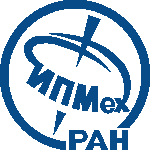
|
ИСТИНА |
Войти в систему Регистрация |
ИПМех РАН |
||
Peculiarities of disorder-induced ferromagnetism phenomena in Fe60Al40 films on a local scaleдоклад на конференции
- Авторы: Smekhova A., Wende H., Szyjka Th, Eggert B., Cöster B., Ollefs K., Walecki D., Salamon S., Bali R., Lindner J., Wilhelm F., Rogalev A., Weschke E., Többens D., Banerjee R., Sanyal B., Schmitz-Antoniak C., La Torre E.
- Международная Конференция : INTERMAG 2018
- Даты проведения конференции: 23-27 апреля 2018
- Дата доклада: 24 апреля 2018
- Тип доклада: Устный
- Докладчик: Smekhova A.
- Место проведения: Сингапур, Sands Expo & Convention Center, Сингапур
-
Аннотация доклада:
Thin films of Fe-rich transition metal aluminide Fe60Al40 (at. %) are very promising for implementation in the modern technology due to a possibility of having tailored magnetic properties. Being weakly ferromagnetic at room temperature in the chemically ordered B2 phase, Fe60Al40 films can be reversibly transformed into the ferromagnetic chemically disordered A2 phase with much higher magnetization in a well controlled way by means of ion irradiation. Prior studies point on important influence of created chemical disorder on static and dynamic magnetic properties of Fe60Al40 films while achievements in magnetic patterning and studies of magnetization reversal have shown their perspective for further use in spin-transport devices [1–3]. Detailed studies performed on a local scale can clarify hidden mechanisms of disorder induced ferromagnetism phenomena in Fe60Al40 films via understanding the influence of the local surrounding and features of Fe-Al hybridization on the magnetic properties. In our work, element-specific X-ray absorption spectroscopy (EXAFS, XANES, and XMCD) in hard- and soft energy ranges together with synchrotron-based XRD (SR-XRD) have been applied to probe the local rearrangements and related magnetic and electronic properties of Fe and Al atoms in bare Fe60Al40 thin films of 40 nm thickness through the order-disorder (B2 → A2) phase transition initiated by 20keV Ne+ ion irradiation with low fluences (~1014 ions·cm-2). Extended X-ray absorption fine structure (EXAFS) spectra recorded at the Fe and Al K edges at room temperature (RT) and low temperature (LT) and SR-XRD have shown significant changes in the local environment of Fe and Al absorbers before and after the irradiation. In the course of the transition a number of Fe-Fe nearest-neighbors grew from 3.47(7) up to 5.0(1) for the ordered B2 and the fully disordered A2 phases, correspondingly, and ∼ 1% of the unit cell volume expansion was found. Distinct changes of Fe and Al coordination due to disordering resulted in increased Fe 3d spin and 4p orbital polarizations and characteristic changes in electronic structure of Al atoms as was demonstrated by RT XMCD at the Fe L2,3 and Fe K edges as well as LT XANES at the Al K edge, respectively [4,5]. A unique possibility to probe the magnetism of 3d states by hard X-rays has been realized by recording the XMCD signal at ~ 60eV above the Fe K edge where so-called magnetic multi-electronic excitations (MEE, secondary processes) are present [6,7]. The analysis of MEE peak amplitude and its integrated intensity has revealed the similar tendencies in their changes with fluence as for 3d effective spin and 3d orbital magnetic moments obtained from XMCD spectra at the Fe L2,3 edges, respectively. Moreover, this analysis points on increased localization of Fe 3d states in A2 phases created by fluencies of (0.75 - 6) x 1014 ions·cm-2. Element-specific hysteresis loops (ESHL) recorded by XMCD either at the Fe K or L3 absorption edges have confirmed the preferential in-plane magnetic anisotropy of irradiated films; the variations in coercivity fields depending on temperature and irradiation fluence have been checked by ESHL at the Fe L3 edge. The specific shoulder related to hybridization effects between Fe and Al has been uncovered with the help of in-situ hydrogen plasma treatment. It has been also illustrated that the reduction of the top oxide layer leads to increase or decrease of Fe 3d spin magnetic moments in the surface region depending on the time of treatment. This suggests that the use of a capping layer could either protect the films from continuous uncontrolled oxidation or further increase the macroscopic magnetization of films that is much more favorable for technological applications. A theory support was provided by self-consistent DFT calculations using VASP program package applied to relaxed model systems. A clear variation of local configurations in B2 and A2 phases followed by sizable changes in Fe and Al magnetic moments has been found. The work was partially funded by Helmholtz Association (Young Investigator’s Group “Borderline Magnetism”, VH-NG-1031). [1] J. Fassbender, M. O. Liedke, T. Strache, et al., Phys. Rev. B, 77 (2008) 174430. [2] R. Bali, S. Wintz, F. Meutzner, et al., Nanoletters, 14 (2014) 435-441. [3] N. Tahir, R. Gieniusz, A. Maziewski, et al., IEEE Transactions on Magnetics 50, 1 (2014). [4] E. La Torre, A. Smekhova, C. Schmitz-Antoniak, et al., to be submitted. [5] A. Smekhova, E. La Torre, C. Schmitz-Antoniak, et al., to be submitted. [6] N. Kawamura, H. Maruyama, K. Kobayashi, et al., J. Phys. Soc. J., 68 (1999) 923. [7] N. Kawamura, T. Yamamoto, H. Maruyama, et al., J. Synch. Rad. 8 (2001) 410.
- Добавил в систему: Смехова Алевтина Геннадьевна